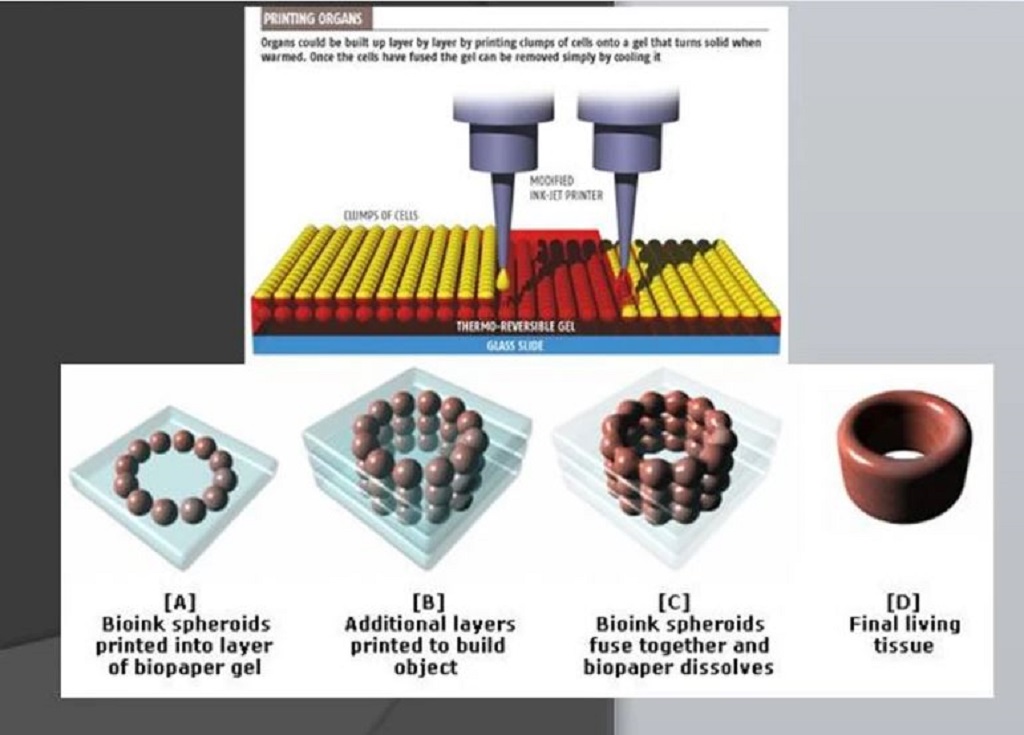
Bioprinting is a 3D printing technique that combines the technology of 3D printers with select biomaterials to imitate components of the body.
How I Got Involved
My personal journey into 3D printing began with a curiosity for bioprinting.
I saw a project detailing a simulation tool that trained general surgeons in rural communities to perform emergency craniotomies during life-threatening situations. As a science enthusiast, I was naturally drawn by such an innovative idea and didn’t hesitate to dig deeper into it. As it turned out, bioprinting was such a huge field with so many different methods and implications, which I’m so excited to share with you in this article.
The Basics
The most important thing to understand is that bioprinting is more of a concept and less of a method, meaning that there are many individual methods to bioprint an object.
Obviously, there are many more, but the four most common methods are inkjet bioprinting, microextrusion bioprinting, laser-assisted bioprinting, and stereolithography bioprinting:
- Inkjet bioprinting: a design is printed using an inkjet printer by firing ink through tiny nozzles onto a paper. Droplets that aren’t even visible begin to then form an image
- Microextrusion bioprinting: a fluid-dispensing system uses pneumatic pressure or mechanical forces (like a piston or a screw) to print a continuous filament via a nozzle
- Laser-assisted bioprinting: the energy from a laser is used to deposit biomaterials onto a substrate. The process consists of a laser source, a ribbon coated with liquidized biological materials (that are deposited on a metal film), and a receiving substrate
- Stereolithography bioprinting: an additive manufacturing technique that cures photosensitive polymers layer-by-layer in a vat when exposed to ultraviolet or visible light
Bioprinting Today And Goals For The Future
Bioprinting has definitely come a long way from where it started. BUT that’s not to say there isn’t still a long road ahead to reach everything there is to accomplish using this technology. As for now, the end destination appears to be a day when we can essentially bioprint “replacement parts” for as much of the functioning human body as possible.
Most innovations, so far, don’t target that end goal with the intention of directly replacing human parts with 3D printed ones, but instead try to build components of the body that can be used to train professionals.
Why? The ultimate goal is to improve current facilities and there are two ways to do this. We can aim to directly 3D print a replacement for the needed part (instead of relying on organ donors, for instance) OR we can 3D print aids that help professionals advance their knowledge of the body and how to solve problems that may occur within it.
For example, the company Fusetec aims to build sinus models for surgeons to train on. Similarly, the Wake Forest Institute created mini organs to help with the testing of COVID-19 treatments. Another good example is SynDaver — a company that makes synthetic cadavers with increasing use of 3D printing.
The human body is obviously very complex to replicate, but 3D printing offers a lot of advantages. Since the body turns out to be so unique, the customization opportunities that 3D printing presents for an affordable cost enable everyone to be able to access quality health care.
Being passionate about both biology and 3D printing, I love seeing all kinds of new innovations in the field of bioprinting. Health care is a huge topic, but I think we can all agree that it’s something that everyone should be entitled to. The advancement of bioprinting technology allows us to step closer to this world.
